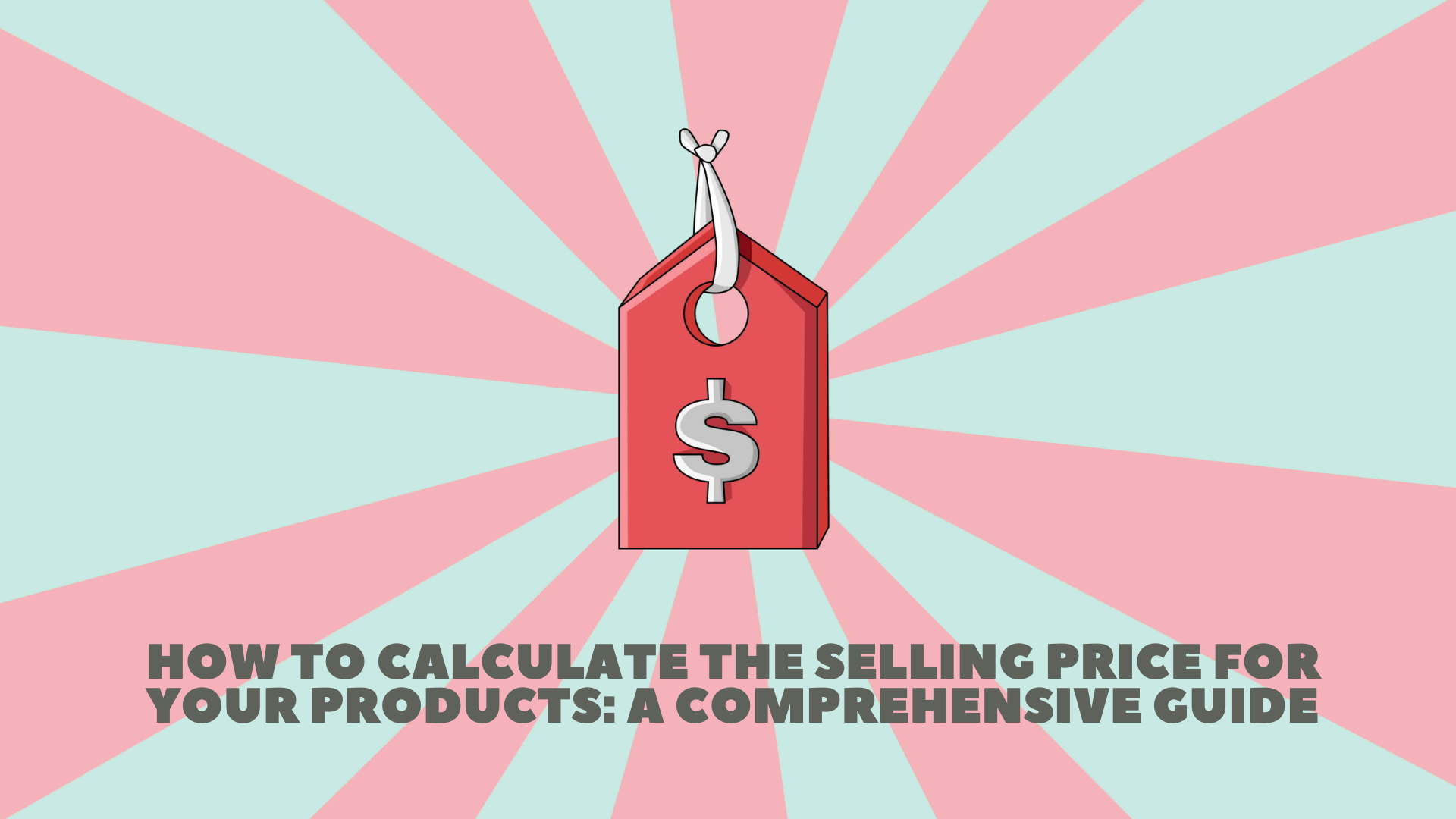Setting the right selling price for your products is crucial for the success of your business. Price too high, and you risk driving customers away; price too low, and you may not cover your costs or maximize your profits. This comprehensive guide will walk you through the essential steps and considerations for calculating the optimal selling price for your products.
Understanding the Importance of Pricing
The selling price of your product not only affects your revenue but also shapes your brand image and market position. A well-calculated price helps you:
- Maximize Profit Margins: Ensuring that you make a profit on each sale.
- Stay Competitive: Aligning with market expectations and competitive offerings.
- Communicate Value: Reflecting the perceived value of your product to the customer.
- Cover Costs: Ensuring all expenses, from production to distribution, are accounted for.
Key Factors in Pricing
Before diving into the calculations, it’s essential to understand the factors that influence pricing:
- Cost of Goods Sold (COGS): The direct costs involved in producing your product, including materials and labor.
- Overhead Costs: Indirect costs such as rent, utilities, and administrative expenses.
- Market Demand: Customer willingness to pay and the overall demand for your product.
- Competitor Pricing: Prices set by competitors for similar products.
- Perceived Value: How much customers believe your product is worth.
- Business Goals: Objectives like market penetration, growth, or maintaining a premium brand image.
Steps to Calculate the Selling Price
1. Calculate Total Costs
Start by determining your total costs, which include both COGS and overhead costs.
- COGS: Add up the costs of materials, direct labor, and any other expenses directly tied to the production of your product.For example, if you’re manufacturing a product, your COGS might look like this:
- Raw Materials: $10
- Direct Labor: $5
- Manufacturing Overheads: $2
- Total COGS: $17
- Overhead Costs: Include indirect expenses such as rent, utilities, marketing, and salaries.For example, if your monthly overhead is $5,000 and you produce 1,000 units per month, the overhead cost per unit would be:
- Overhead Cost per Unit: $5,000 / 1,000 = $5
- Total Cost per Unit: Add your COGS and overhead costs per unit.
- Total Cost per Unit: $17 (COGS) + $5 (Overhead) = $22
2. Decide on a Profit Margin
Determine the desired profit margin you want to achieve. This is often expressed as a percentage of the total cost.
- Profit Margin: A common approach is to set a profit margin based on industry standards or business goals. For example, if you aim for a 30% profit margin:
- Profit per Unit: 30% of $22 = $6.60
3. Set the Selling Price
Add the profit margin to your total cost to determine the selling price.
- Selling Price: Total Cost per Unit ($22) + Profit per Unit ($6.60) = $28.60
4. Consider Market Factors
Adjust your calculated price based on market conditions, competitor pricing, and perceived value.
- Competitive Analysis: Compare your price with those of competitors. If similar products are priced between $25 and $30, your calculated price of $28.60 might be competitive.
- Perceived Value: If your product has unique features or superior quality, you might price it higher to reflect its added value.
5. Test and Adjust
Launch your product and monitor sales performance. Be prepared to adjust your pricing strategy based on customer feedback and market responses.
- Promotions and Discounts: Consider introductory offers or seasonal discounts to attract customers.
- Regular Reviews: Periodically review and update your pricing to align with changing costs and market conditions.
Pricing Strategies
Depending on your business goals and market conditions, you might choose from various pricing strategies:
- Cost-Plus Pricing: Adding a standard markup to the cost of the product.
- Value-Based Pricing: Setting a price based on the perceived value to the customer.
- Competitive Pricing: Basing your price on competitors’ prices.
- Penetration Pricing: Setting a low price to enter a competitive market and attract customers quickly.
- Premium Pricing: Setting a high price to create a perception of quality and exclusivity.
Common Mistakes to Avoid
- Ignoring Market Trends: Not considering market demand and competitor pricing can lead to setting prices that are too high or too low.
- Overlooking Costs: Failing to account for all costs can erode profit margins.
- Not Testing Prices: Launching without testing different price points can miss opportunities for optimization.
- Rigid Pricing: Being inflexible with prices can prevent you from adapting to market changes.
Conclusion
Calculating the right selling price for your products is a blend of art and science. It requires a thorough understanding of your costs, market conditions, and business goals. By following the steps outlined in this guide and continuously monitoring and adjusting your pricing strategy, you can set a price that maximizes profits, aligns with customer expectations, and supports your long-term business success.









